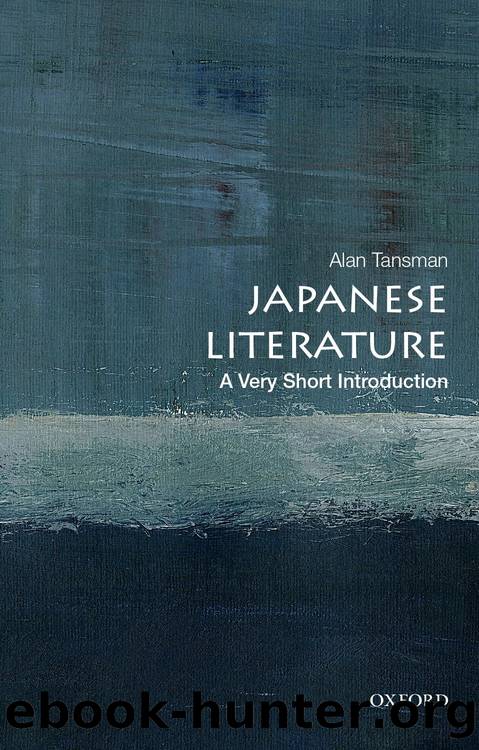Japanese Literature by Alan Tansman

Author:Alan Tansman [Tansman, Alan]
Language: eng
Format: epub
ISBN: 9780190933913
Publisher: Oxford University Press
Published: 2023-02-14T00:00:00+00:00
Nearly half a century later, in 1968, when he represented himself to the world in his Nobel acceptance speech, Kawabata Yasunari displayed yet another style of ironic self-presentation. A dedicated surrealist writer who only appears to naively embrace an unsullied cultural past, Kawabata drew his inspiration from the Buddhist sphere of Japanese literary aesthetics, the sad, austere, autumnal qualities evoked by the Buddhist medieval poets Myôe and Ikkyû. Their mysterious, suggestive, and inferential poetry belonged squarely within the classical tradition, while its sensuality was akin, in his mind, to European Symbolism. In embracing this aesthetic, Kawabata was also alluding to a tradition shot through with the Indian, Chinese, and Japanese Buddhist distrust in the reliability of language, a tradition in which life-as-dream had become an aesthetic given. At the heart of this literary sensibility were what he calls âeyes at the final moment,â which glimpse enlightenment just as they are about to close forever. What can be more ironic than the fact that âeyes before deathâ came to Kawabata from Akutagawa, who, in his suicide noteâa literary piece as famous as many a great novelâwrote that, ânature is beautiful because it comes to my eyes before death.â
Kawabata was a surrealist, speaking, as he neared the end of his life (he committed suicide four years after his Nobel Prize acceptance speech), through the language of Buddhism. His gift to world literature was a set of sensual, erotic, strange, dreamlike-but-gritty short stories and novelsâat once magical and realistic. Kawabata was a great experimenter with form, a master of the epiphanic prose-poem short story, the fractured narrative of modernity, and the seamless amalgam of European and Japanese literary expression. Kawabataâs masterwork Snow Country, a short novel he began in 1934 and completed in 1948, tells the story of a bored Tokyo intellectual, Shimamura, seeking honesty and authenticity in the countryside, in the land of snow.
Shimamura feels alienated from the landscape; he has lost the powerâthe kotodamaâof language, and the capacity to create authentic art. The world of the novel is a canvas painted with the blended palette of sensual experience and literary imagination. The narrative develops according to the pacing of a Nô play, in what is known as the jo-ha-kyû rhythm, which is the gradual build-up, the increase in speed and tensionârapid, ecstatic climaxâjust as its characters also derive from the stock characters of Nô. The protagonist has been lured to the snow country by the memory of a young geisha, Komako, who serves as a blank canvas on which to paint not only the colors but also the sounds, smells, and vibrations of the natural world. Kawabata conjures her through touch and smell: âThe dusky green of the cedars seemed to reflect from her neck,â and her skin like âwhite porcelain.â The snow country itself, like Komako, is a transparency, a canvas, a template for the senses.
4. A snow-bound hot spring resort, enclosed by snow-dusted trees, tucked snuggly into a frosted hillside, hard against a cold river sluicing through a narrow
Download
This site does not store any files on its server. We only index and link to content provided by other sites. Please contact the content providers to delete copyright contents if any and email us, we'll remove relevant links or contents immediately.
The European History Highway: A Guide to Internet Resources by Dennis A. Trinkle Scott A. Merriman(498)
The Seven Wonders of the Ancient World by Michael Denis Higgins(479)
European Security in a Global Context by Thierry Tardy(472)
European Security without the Soviet Union by Stuart Croft Phil Williams(472)
The Routledge companion to Christian ethics by D. Stephen Long Rebekah L. Miles(460)
Hudud Al-'Alam 'The Regions of the World' - a Persian Geography 372 A.H. (982 AD) by V. V. Minorsky & C. E. Bosworth(402)
Gorbachev And His Generals by William C. Green(393)
Get Real with Storytime by Julie Dietzel-Glair & Marianne Crandall Follis(391)
Tibetan Studies in Comparative Perspective by Chih-yu Shih Yu-Wen Chen(387)
Governance, Growth and Global Leadership by Espen Moe(385)
Hyperculture by Byung-Chul Han(379)
CliffsNotes on Fitzgerald's The Great Gatsby by Kate Maurer(362)
The Oxford History of the World by Fernández-Armesto Felipe;(356)
How Languages Are Learned 5th Edition by Patsy M Lightbown;Nina Spada; & Nina Spada(355)
The Egyptian Economy, 1952-2000 by Khalid Ikram(354)
Oral Poetry and Narratives from Central Arabia: The Poetry of Ad-Dindan : A Bedouin Bard in Southern Najd (Studies in Arabic Literature, Vol 17) (English and Arabic Edition) by P. M. Kupershoek P. Marcel Kurpershoek(345)
The Oxford Handbook of the Incas by Sonia Alconini(336)
Europe Contested by Harold James(323)
The Hutchinson Dictionary of Ancient and Medieval Warfare by Peter Connolly John Gillingham John Lazenby(308)
